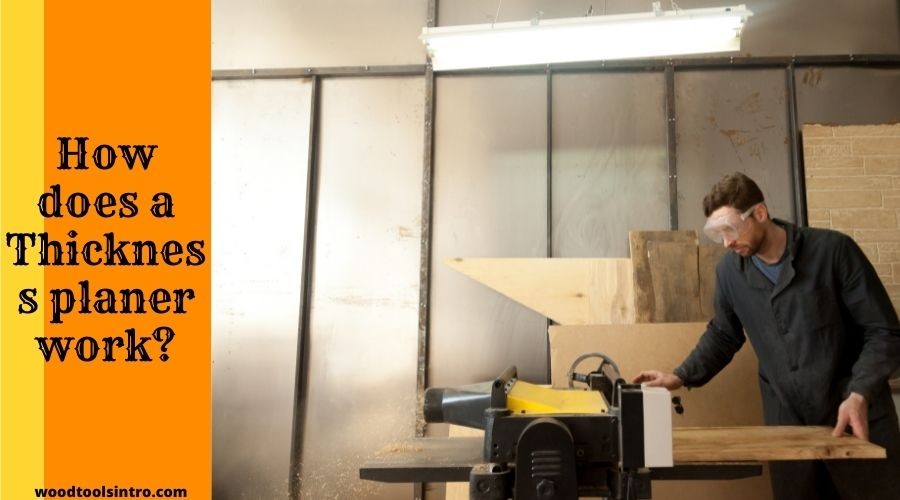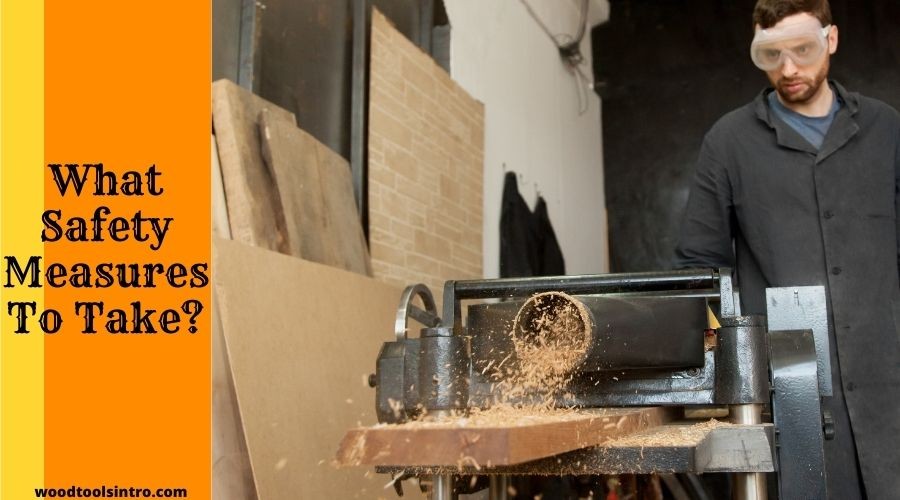If woodworking is your profession or hobby, we can assume that you most likely have a workshop thickness planer. If not, you should get one already. It’s your best bet at getting your boards to look perfect the way you want them to look for any function you need it.
If you already have a thickness planer and you’re wondering how it works, you’ve come to the right place. We’ll show you how to use a Thickness planer in easy steps. Ready?
Let’s dive in.
What is a thickness planer?
A Thickness planer is a woodworking tool that every woodworker needs, especially if you’re particular about having boards with consistent thickness. If you require that perfection, the Thickness planer should be your best bud.
In case you’re wondering if the thickness planer is similar to the tool called “thicknesser” in Australia or the US or the “Planer” in North America, you’re correct.
The Thickness Planer is also called Thicknesser or Planer. With a Thickness Planer, you won’t have to bother about your boards having the same thickness throughout their length. It is an innovative tool that keeps your work looking professional.
The best part is that the Thicknesser doesn’t only work to give your boards a standard thickness; you can also use it on planks and beams. When shopping for a thickness planer, be sure to define which type you want; a Benchtop Thickness Planer, Stand-alone Thickness Planers, or Planer/Jointer Combo Machines.
Also Check Our New Article: Best Planer Blades For Dewalt 734
How does a Thickness planer work?

The working principle of a thickness planer follows the quick return motion mechanism that’s not too different from the shaper machine. The quick return motion mechanism follows the backward and forward movement pattern, completing every forward and backward stroke it makes in the process.
But as it moves forward, it cuts your planer or material. Then, it moves backward, making no cut in the process, only to move forward again to further cut your material.
Specifically, when it comes to a thickness planer, two parts matter; the workpiece (the moveable part) and the tool head, the stationary part. The workpiece lays on the worktable while the tool head holds the single-point cutting tool.
Once you’ve successfully fixed the workpiece and the single-point cutting tool, proceed to power up the machine. The cutting tool prompts the worktable to move forward and backward; when it moves forward, it cuts your material; when it moves backward, it doesn’t do anything to the material but push it forward again. This movement is called the return stroke.
How to use a Thickness Planer (Step by Step)
Here’s how to use a thickness planer
Decide the planer to use
To Plan your board, you’ll need to get a Thickness planer. There are a couple of things you need to consider before deciding which Thickness planer is perfect for your workshop. First, you can choose between the Full-sized planers and the benchtop thickness planers.
There are portable thickness planers in the market that’ll work just fine for your preferred use context. Although the benchtop thicknesser comes in several sizes, choose a portable thickness planer. Also, the significant difference between the types of thickness planers resides in the number of stock they can handle.
Aside from that, they all function the same way. So, in the real sense, you’re not missing out on a unique function when you choose a type of Thickness planer over the other.
Thickness Planer Setup
After choosing the thickness planer you want, set it up. When setting up your thickness planer in your workshop, ensure you plug it directly into a wall outlet and not an extension. It’ll also be great if you got a portable planer; it makes the setup process effortless.
Also, ensure that there’s enough space in the area you’ve chosen to set up your machines. The space is so you can infeed and outfeed easily. The table you’ll set up the machine on should be stable to prevent accidents from occurring.
Choose your Material
Choose the type of wood you want to plane. The rule of thumb for the planer limit is to plane 12 to 14 inches long wood that’s not less than 3/4 inches. Nevertheless, the length of wood you can plane depends on the machine of your choice.
Choose your depth stop and thickness:
The next step is to figure out the thickness depth of your wood and set the depth to match it. If your thickness planer comes with the depth stop function, set the depth stop.
The depth stop stops the planer from planning your wood deeper than the depth stop. If you can’t figure out how to make the depth stop work, feel free to ignore it by setting it on the very low end.
Plane your wood
Once you’ve fixed the setting of your planer and other things, turn on the wall outlet and let it pick up speed. Then, slowly feed the board to the thickness planer. The planer cutting should be cut along the wood grain to prevent tear-out.
Ensure that you only feed the board to the machine after turning it on, not before. Then, put the board into the machine from the front.
That’s how you use a thickness planer.
What Safety Measures To Take?

There are specific safety measures you should take when using the thickness planer. They include;
- Use a push stick to feed the board to the machine. It would prevent your fingers from getting caught in the cutter.
- Do not wear hand gloves, jewelry, long sleeves, and tie your long hair behind your head.
- Only make adjustments to the table when the machine is turned off
- Get rid of sawdust with the proper dust extraction tool
- You should wear earplugs, safety goggles, and a respirator mask if you can lay your hands on one.
What Can You Plan With The Thickness Planer?
You can plan wood, stock, boards, planks, and beams. It’s for consistency in woodworking.
Last Words
Knowing how to use a thickness planer simplifies and upgrades the context of your work as a woodworker. It also saves time. There’s a lot to gain from having a functional thickness planer in your workshop.
Regardless of the type you opt for, you’ll realize that all thickness planers work alike. Also, ensure to abide by the safety tips we highlighted above. Observing them would prevent you from becoming a victim of accidents.

I am Imtiaj Islam. I am a wood working enthusiast, having 6 years of experience in carpentry work. I have a BBA graduate degree from Chittagong College. I got vocational training on wood works from Korean Polytechnic out of the quest and zest he has for carpentry as well. I take several wood projects and keep testing different woodworking tools for comfortable and perfect work. I just love playing with woods and machines.
